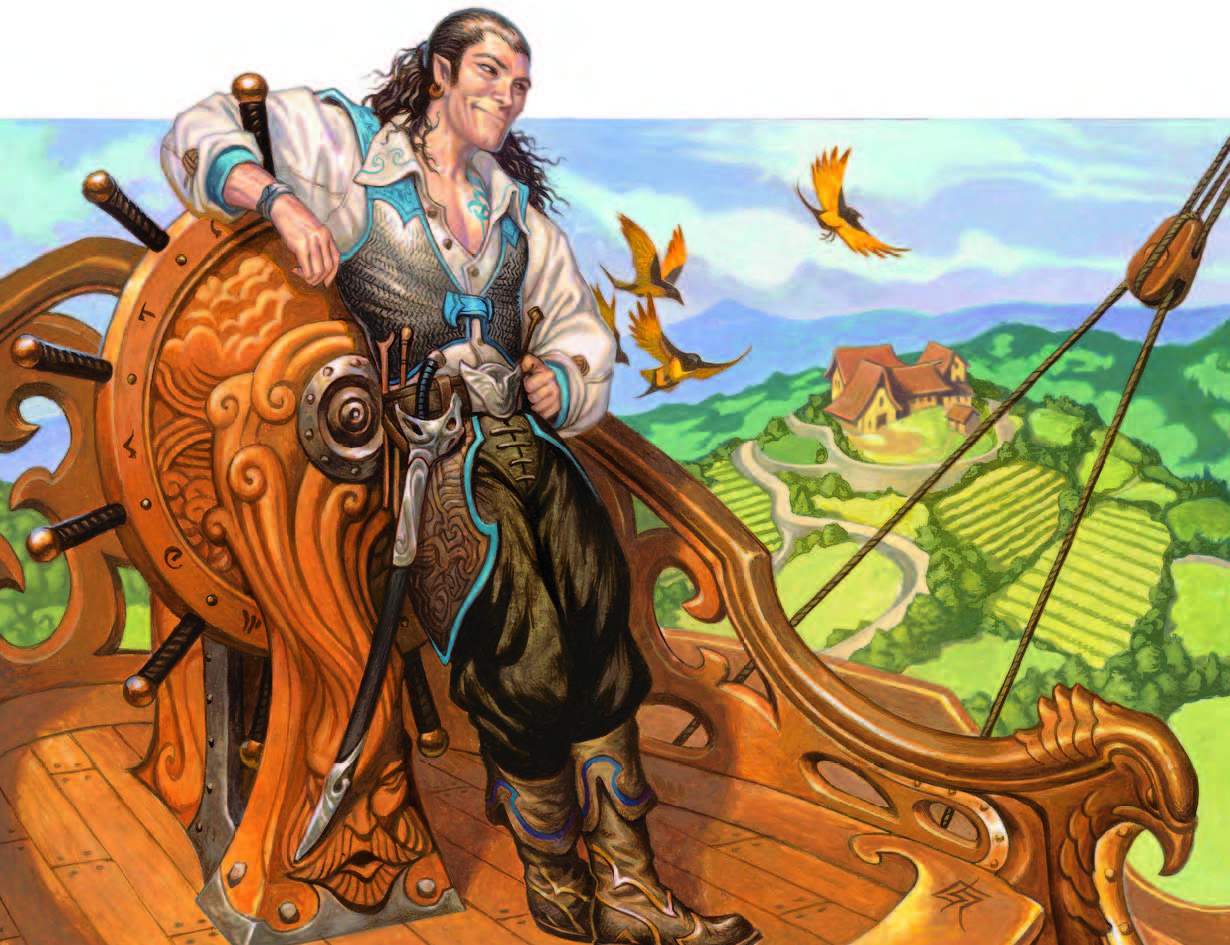The Falconer
A bird-training base class
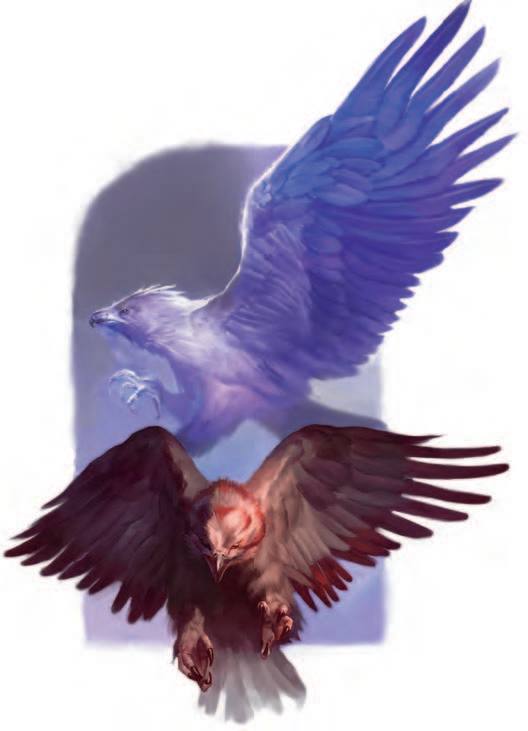
The Falconer
A great-horned owl soars above a battlefield, watching with sharpened talons ready. At a whistled Command, it swoops down and rends its foe, returning to the shoulder of its master.
A small falcon perches on a dwarf's glove. With a gesture, he sends it darting at his target, simultaneously loosing a crossbow bolt.
A stout woman in chain armor rides atop a massive eagle, lance in hand. She directs her mount with whistled Commands, and the pair fight together as one.
Training hunting birds is a tradition nearly as old as agriculture. For most, it is a hobby, but for some, it is a tool of war, or a philosophy, or simply a deep bond to nature.
Sport, Necessity, and Joy
Falconers are common in most societies where small game is hunted, whether for sport, for livelihood, or as a religious rite in service to the gods of beasts and fields. Most falconers live relatively peaceful lives: rearing young birds, training juveniles, exercising adults, and organizing hunts for the wealthy or snaring rabbits and minks for the meat and skins.
A few, however, are driven out to adventure. When they leave their mews, they take their favorite bird with them, setting the others free or leaving them to an apprentice. This bird becomes their most stalwart companion, eventually unlocking potential far in excess of other birds.
Trained for Combat
Combat-training a raptor is a full-time occupation. Generally, a falconer adventuring spends a great deal of their downtime caring for and practicing with their bird. But once the training is complete, the bird is a weapon as potent as the lance of a knight-errant, and a tool as useful as a thief's lockpicks. With their birds, falconers can strike down foes from great distances, retrieve small objects, or even teach it to stand watch while the party rests.
As the falconer and bird both grow, they learn to fight together more effectively. While rookie adventuring falconers might devote their entire focus to the bird's actions in combat, experienced ones smoothly direct their bird with whistles and gestures, all the while fighting alongside them.
Creating a Falconer
When creating a Falconer, consider what drove them to seek an adventuresome life. Were they driven out by jealous rivals, or fired by disapproving patrons? Perhaps they simply were struck with wanderlust, or have been traveling and living nomadically their whole life alongside their bird until adventure stumbled upon them.
Work with your DM to determine how your character fits into the world. A city-raised falconer likely worked with the nobility or the wealthy as a sport master, while a rural one may simply have trained a chick as a means of gathering food. Other options might exist as well.
Quick Build
You can make a falconer quickly by following these suggestions. First, your highest ability score should be Dexterity, followed by Constitution or Wisdom. Second, take a broadwing as your initial bird, and select Animal Handling as one of your three skills (unless that skill is granted by your background). Finally, the Folk Hero, Noble, and Outlander backgrounds all fit easily with the falconer, but other backgrounds might suit your character better.
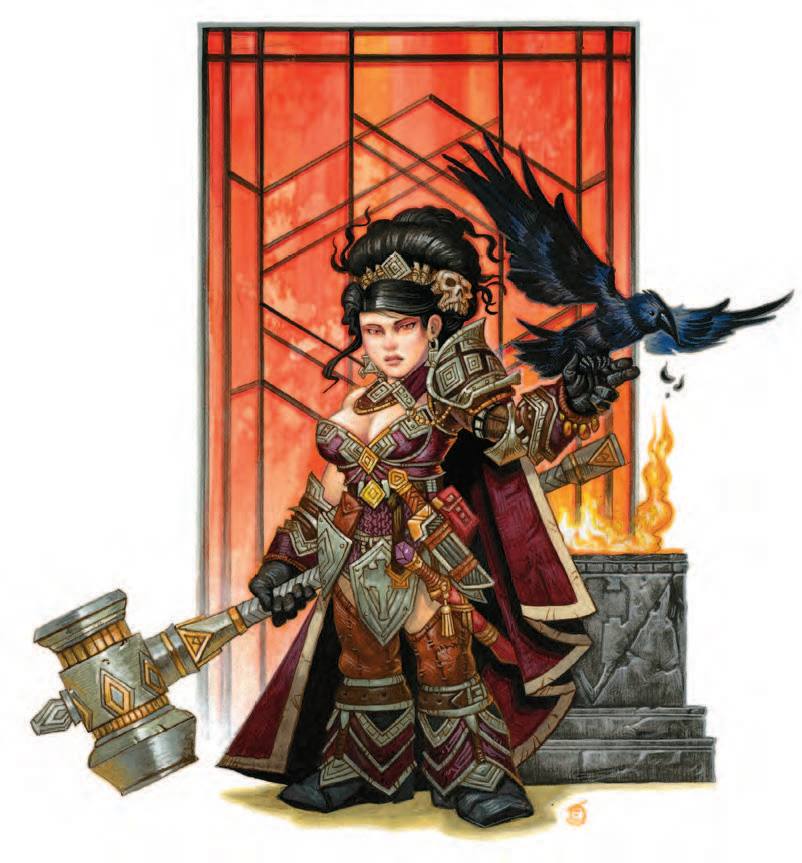
The Falconer
| Level | Proficiency Bonus |
Features | Attribute Bonus |
|---|---|---|---|
| 1st | +2 | Hunting Bird, Commands | 3 |
| 2nd | +2 | Training Style | 3 |
| 3rd | +2 | Command: Harry | 3 |
| 4th | +2 | Ability Score Improvement | 4 |
| 5th | +3 | Improved Commands | 4 |
| 6th | +3 | Called Target, Shared Attunement | 4 |
| 7th | +3 | Training Style Feature | 4 |
| 8th | +3 | Ability Score Improvement | 4 |
| 9th | +4 | Hardy Breeding | 4 |
| 10th | +4 | Training Style Feature | 4 |
| 11th | +4 | Mythic Heritage | 4 |
| 12th | +4 | Ability Score Improvement | 5 |
| 13th | +5 | Mythic Strikes | 5 |
| 14th | +5 | Training Style Feature | 5 |
| 15th | +5 | Mythic Defenses | 5 |
| 16th | +5 | Ability Score Improvement | 5 |
| 17th | +6 | Called Target Improvement | 5 |
| 18th | +6 | Improved Hunting Bird | 5 |
| 19th | +6 | Ability Score Improvement | 6 |
| 20th | +6 | Perfect Specimen | 6 |
Class Features
As a falconer, you gain the following class features
Hit Points
- Hit Dice: 1d8 per level
- Hit Points at 1st Level: 8 + your Constitution modifier
- Hit Points at Higher Levels: 1d8 (or 5) + your Constitution modifier per falconer level after 1st.
Proficiencies
- Armor: Light armor, shields
- Weapons: Simple weapons
- Tools: Choose one type of artisan's tools or musical instrument
- Saving Throws: Dexterity and Intelligence saving throws
- Skills: Choose 3 from Acrobatics, Animal Handling, Athletics, Medicine, Nature, Perception, Stealth, and Survival
Equipment
You start with the following equipment, in addition to the equipment granted by your background:
- (a) a light crossbow with 20 bolts or (b) any simple weapon
- (a) a set of artisan's tools or (b) a musical instrument
- Leather armor, a dagger, a falconer's glove, and an explorer's pack
Hunting Bird
You are accompanied by a hunting bird, which aids you in many situations. Choose one of the following three types of bird. Your choice will determine the range at which your bird can strike and the damage it deals with attacks. Each also has unique properties for one or more Commands (see the Commands feature for more details).
- Broadwing. Your bird is a soaring bird, such as an eagle or buzzard. It has a range of 60 feet and deals 1d10 slashing damage.
- Shortwing. Your bird is a nimble attacker, such as a hawk. It has a range of 50 feet and deals 1d6 slashing damage.
- Longwing. Your bird is a swift flier, such as a falcon. It has a range of 120 feet and deals 1d8 slashing damage.
Training a New Bird
At various points, a you may find yourself in need or want of training a new bird, which can be the same or a different type to your initial bird. You can keep a number of birds up to your Wisdom bonus (minimum 2) at any one time, though you can take only one Hunting Bird along with you each day, chosen each time you complete a long rest. Any other birds are either freed for flight for the day or kept in an enclosure or cage. Caring for any additional birds you have can be done during a long rest, provided you have sufficient food and water for the birds. Adult birds in free flight can generally hunt their own food and find their own water, provided the terrain allows it.
To begin training a new bird, you must acquire it either by finding a juvenile or infant bird and raising it yourself. You can also attempt to earn the trust of an adult bird with a month of work. At the end of the month, you must make a DC 15 Wisdom (Animal Handling) check. If you fail this check by more than 10, the bird flees and you must acquire a new bird and start over. Juvenile birds or infant birds do not require a check to gain their trust, but still take a month before they are mature enough to begin training. You must spend two hours each day with the new bird while attempting to gain its trust or raise it. These two hours may be taken during short rests or the light activity of a long rest.
Once you have the trust of a bird, you begin training. Training takes 120 hours. You can spend a minimum of 1 and a maximum of 4 hours with your bird each day in training. As with earning a bird's trust, you can undergo training during short rests or the light activity of a long rest.
After you have trained the bird, it knows the basic Commands learned at 1st level of this class and may be taken with you as your Hunting Bird for the day. It learns any additional Commands that you can issue at a rate of one per 28 hours, which can be accelerated in the same fashion as normal training (up to 4 hours each day). If you have more than one additional Command, you choose which Command is learned each time. Any improvements to a Command are learned simultaneously with the initial Command.
If you have the Mythic Heritage feature, your new bird gains the benefits of that feature when it learns the Command associated with its Mythic Heritage. As with the base type of your bird, your new bird can have the same or a different Mythic Heritage.
Regardless of your choice, your bird is a tiny beast with an AC equal to 10 + its Attribute Bonus and maximum hit points equal to half your maximum hit points. It uses your skill and saving throw modifiers, but always has advantage on Perception checks relating to sight. Your bird can share your space without penalty, and it is not considered to be occupying any space for the purposes of features like Pack Tactics or Sneak Attack.
Whenever you regain hit points following a short or a long rest, your bird regains an equal number of hit points. If you complete a short rest and heal more than your maximum hit points by spending hit dice, you can grant the additional healing to your bird.
If your bird ever dies, you can restore it to life with a ritual requiring 8 hours, or you can train a new bird (see the sidebar: training a new bird).
Attribute Bonus
Your bird has an Attribute Bonus, which is used in place of an Ability Score when it makes attack rolls or certain other checks. This Attribute Bonus is 3 at first level and increases at certain intervals as indicated on Table: The Falconer.
- Bird Damage: Bird type damage die + your bird's Attribute Bonus.
- Bird Attack Rolls: your proficiency bonus + your bird's Attribute Bonus
- Bird Saving Throw DC: 8 + your proficiency bonus + your bird's Attribute Bonus
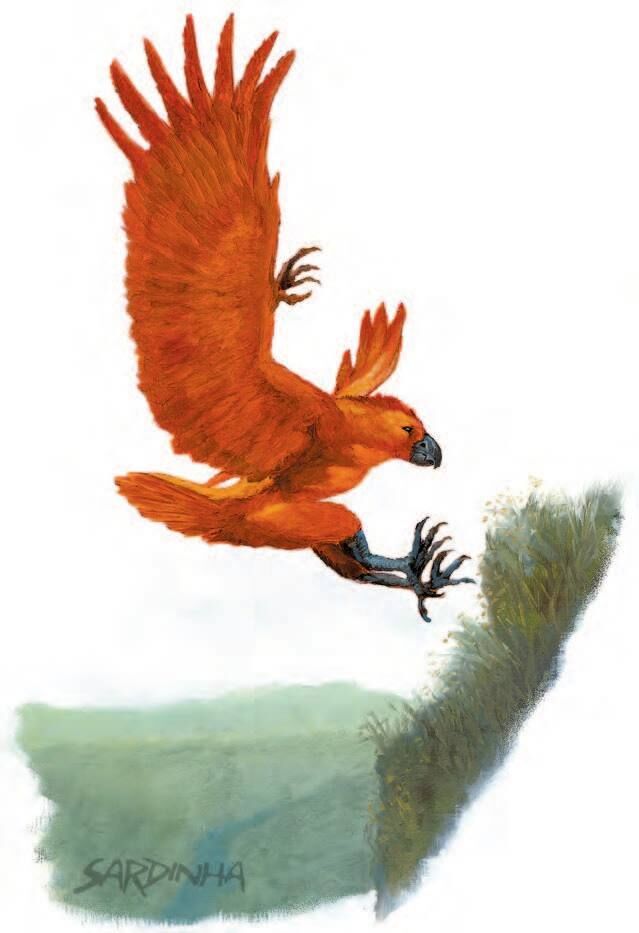
Commands
You have trained your bird to respond to certain Commands. At 1st level, it knows three such Commands: Retrieve, Soar, and Strike. You learn additional Commands from your Training Style and when you reach certain levels in this class.
Issuing a Command to your bird is an Action, unless otherwise noted. Your bird can perceive your Commands up to 200 feet away. If it is further away than that, it generally tries to approach you. A bird is considered perched on your glove if it shares your space; it does not necessarily need to actually perch on your glove, but can rest or hover over your shoulder or even be carried in a bag of holding or similar enclosure to which you have access.
Soar
You Command your bird to fly to a space you and it can see within its range, or to return to your glove. Once there the bird hovers or circles until it is issued another Command. If the bird would return to you after completing a Command, such as Strike or Retrieve, you can choose to have it return to the location where you last told it to soar instead. You may only issue the soar Command to a bird perched on your glove.
If you move more than 300 ft. from your bird it begins returning to you. Treat its speed as equal to its range to determine how long it takes to reach you.
- Broadwing. You may issue the soar Command to a broadwing if you are within its normal range, choosing a new target you and it can see within its range from where it is already soaring.
- Shortwing. If you issue the soar Command to your bird and the space you choose is within 5 feet of an enemy, you can instruct it to make a single melee attack as a bonus action.
- Longwing. Your bird does not provoke opportunity attacks when Commanded to soar.
Strike
You Command your bird to fly adjacent to a target you and it can see within its range and make a single melee attack. Regardless of whether the bird hits or not, it returns to your glove at the beginning of your next turn. Birds do not trigger opportunity attacks while taking the Strike Command.
- Broadwing. You can reroll any 1s or 2s on its damage dice. You must use the new roll, even if it is also a 1 or a 2.
- Shortwing. Your bird can make a second melee attack if the first one misses. If the first attack had advantage or disadvantage, so does the second attack.
- Longwing. Your bird does an additional 2 damage if it travels more than 60 feet before attacking its target.
Retrieve
You Command your bird to fly to an item or unconscious creature that it is capable of grasping and weighing no more than 5 lbs within its range and bring it back. At the start of your next turn, your bird returns to your glove and gives you the item or creature or drops it on the ground.
- Broadwing. Your bird can carry two items or creatures within its weight limit, or one item or creature of twice its weight limit.
- Shortwing. Your bird returns the item or creature immediately instead of at the start of your next turn.
- Longwing. You can issue this Command as a Reaction if your bird reduces a creature to 0 hit points and it could carry that creature.
Training Style
At 2nd level, you devote yourself to a particular training style, such as Flockmaster or Stalker. Your choice grants you features when you choose it and again at levels 6, 10, and 14.
Command: Harry
At 3rd level, you can Command your bird to harry a target, distracting it so your allies can attack more effectively. Your bird flies adjacent to a target you and it can see within its range and distracts it. The next attack roll targeting that creature has advantage, and your bird is considered adjacent to the target for the purposes of features like Sneak Attack and Pack Tactics. This effect ends if the target moves more than 5 feet away from your bird. At the start of your next turn, your bird returns to your glove.
- Broadwing. Your bird instead grants advantage to a number of attacks equal to half your bird's Attribute Bonus (rounded up).
- Shortwing. If the target moves away from your bird, you may use your Reaction to Command it to follow the target up to its range. The bird is considered to be within 5 feet of the target until the target has moved out of its full range.
- Longwing. The target also has disadvantage on its next attack roll.
Ability Score Improvement
When you reach 4th level, and again at 8th, 12th, 16th, and 19th level, you can increase one ability score of your choice by 2, or you can increase two ability scores of your choice by 1. As normal, you can’t increase an ability score above 20 using this feature. Alternatively, you can choose a feat (see Chapter 6 for a list of feats).
Improved Commands
At 5th level, you have taught your bird shorthand whistles for all its Commands. You can issue a Command as a bonus action instead of an action. If an effect would already allow you to issue a Command as a bonus action, you can instead issue it for free once per turn. You may only issue one Command to your bird each turn unless another effect allows you to issue additional Commands.
Called Target
At 6th level, you are used to spotting out targets and weak points. As an action, you can call a target you can see within 60 feet of you. All attacks made by your bird and the first weapon attack made by any other ally against that target roll one additional weapon damage die.
At 17th level when you use this feature, you may issue the Strike Command on the same target for free. If you do so, you may still issue a Command to your bird normally on that turn using your bonus action.
Hardy Breeding
At 9th level, your bird adds its Attribute Bonus to all saving throws it makes.
Mythic Heritage
At 11th level, your bird manifests a previously unknown connection to a powerful supernatural birdlike creature. Choose one of the following options. Your choice modifies the traits of your bird and grants a new Command. Your bird also takes on physical characteristics representing their heritage. For example, a bird with phoenix heritage may develop eyes like embers or smouldering feathers, while a simurgh heritage may manifest as brilliant rainbow-like feathers or the growing of pointed dog-like external ears.
- Phoenix. The phoenix is an elemental being of fire in the shape of a bird. Your bird is a distant scion of a phoenix and is attuned to the primal fire it represents. Your bird is immune to fire damage. You learn the Ignite Command described below.
- Roc. The roc is massive, large enough to eat the sun in some stories. Your bird grows to enormous size like its distant ancestor. Your bird is now large, instead of tiny, and can serve as a mount for you. Your bird has a fly speed equal to its range. When you issue a Command that would involve your bird flying to a new location while riding it, you travel with it and it does not return to where it started if it would otherwise. Additionally, its impressive size makes it tougher, granting it 2 additional health per level. You learn the Guard Command described below. Your bird's weight limit for the Retrieve Command increases to 10 lbs times its Attribute Bonus.
- Simurgh. Sometimes used as a divine messenger, simurghs have a natural affinity for health and growth. Your bird regains twice as many hit points from any healing effect. You learn the Restore Command described below.
Command: Ignite
Phoenix only
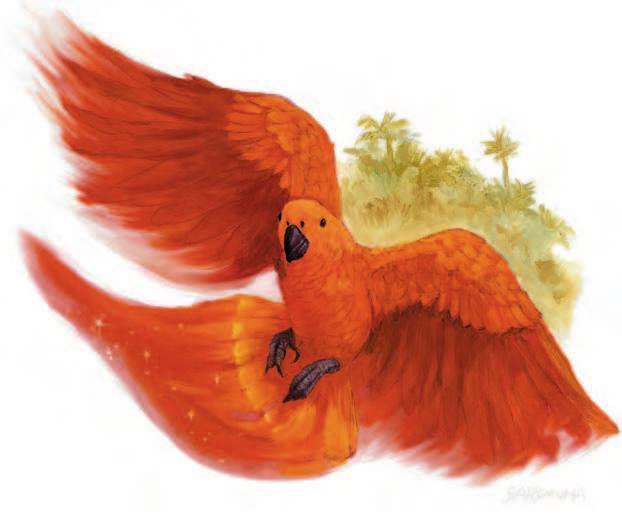
Phoenix Variant: Thunderbird
Thunderbirds are primal elemental birds much like the phoenix. If you wish you can have a thunderbird heritage, use the rules described here for the phoenix heritage, swapping all instances of fire damage for lightning damage or thunder damage (the same one each time). Any future abilities that refer to the phoenix heritage also swap fire damage for the chosen damage type. You may make similar changes for other primal elemental birds if you wish, such as a cockatrice using poison or necrotic damage or a more unique option using a different damage type entirely.
You order your bird to fly to a location within its range and release a burst of flame. Each creature within 10 feet of its destination must make a Dexterity saving throw. On a failed save, creatures take 6d6 fire damage. On a successful save, they take half as much damage. At the start of your next turn, your bird returns to your glove. You can issue this Command a number of times equal to your bird's Attribute Bonus. You regain all uses of this Command whenever you complete a long rest.
Command: Guard
Roc only
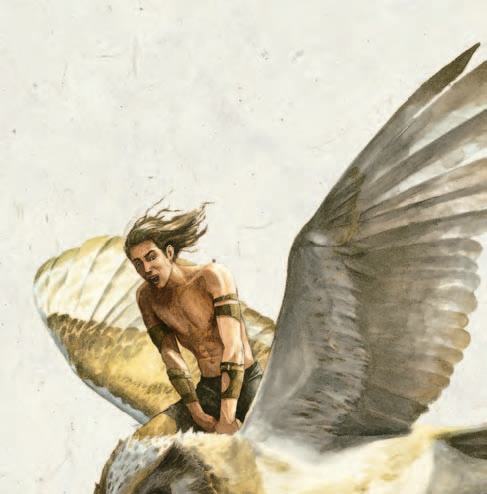
You order your bird to fly to a target of medium size or smaller within its range and protect it within its massive wings. Your bird provides that creature with three-quarters cover until the start of your next turn. While a creature is damaged while being guarded by your bird, you may use your Reaction to divert half of that damage to your bird.
Command: Restore
Simurgh only

You order your bird to fly to a creature within range and use its latent magic to restore their hit points. Your bird restores 3d8 hit points each time it uses this ability. At the start of your next turn, your bird returns to your glove. You can issue this Command a number of times equal to your bird's Attribute Bonus. You regain all uses of this Command whenever you complete a long rest.
Mythic Strikes
At 13th level, when you Command your bird to Strike, it gains an additional benefit based on its Mythic Heritage. Attacks granted from other actions, such as a shortwing's soar effect, do not gain these benefits.
- Phoenix. The target also takes 1d4 fire damage, regardless of whether the attack hits or not. You may choose to have all damage dealt by the normal attack be fire damage as well.
- Roc. If you are riding your bird, you may make a single weapon attack against the same target as a reaction.
- Simurgh. The bird gains temporary hit points equal to the damage dealt. Once the bird returns to you, you gain an equal number of temporary hit points.
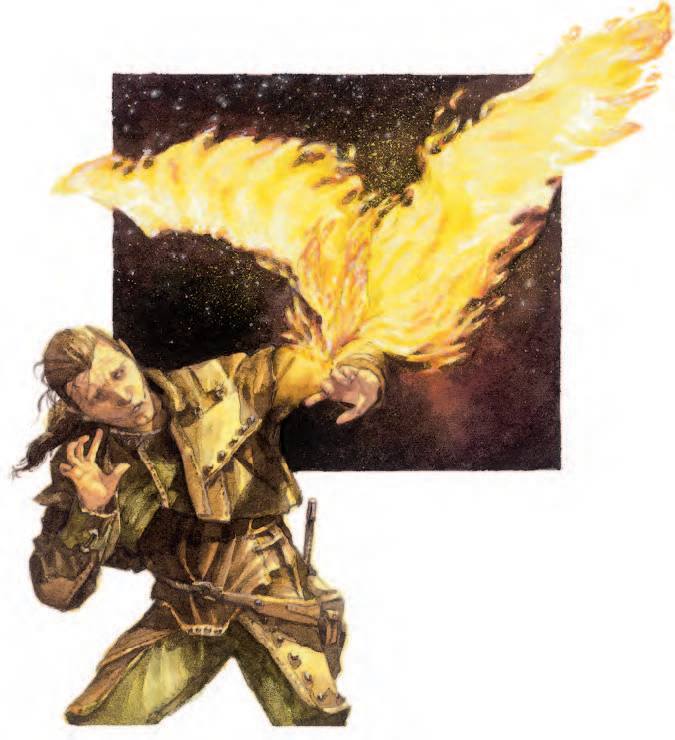
Mythic Defenses
At 15th level, your bird gains a unique defensive bonus depending on its Mythic Heritage.
- Phoenix. If your bird falls to zero hit points, you may use your reaction to order it to explode and vanish in a burst of flame. Treat this as the Ignite Command, but it does not require or use a charge of that ability. At the start of your next turn, your bird reforms from flame in your space at full health and cured of any poisons or diseases affecting it. Once you have used this feature, you cannot use it again until a week has passed.
- Roc. While using the Guard Command, your bird now also reduces all damage taken by its target by an amount equal to its Attribute Bonus. Additionally, its armor class is increased by 2 at all times.
- Simurgh. Your bird is immune to disease and poison. Each time you complete a long rest, choose two damage types. Your bird is resistant to both damage types. In the case of slashing, bludgeoning, or piercing damage, your bird is resistant to those damages only if they are dealt by non-magical attacks.
Improved Hunting Bird
At 18th level, you are so in tune with your birds that you can bring abilities out of them greater than before. Your bird's range is increased by 50% and its damage die is increased by one step (1d6 -> 1d8 -> 1d10 -> 1d12).
Perfect Specimen
At 20th level, your bird gains two benefits: one from its type and one from its Mythic Heritage.
- Broadwing. At the start of your turn, if your bird is adjacent to a target before returning to you, it can make a single melee attack against that target. This attack does not gain the additional bonuses of the Strike Command.
- Shortwing. Your bird no longer needs to return to you after each Command. At the start of your turn, it can move up to half its speed as if Commanded to Soar.
- Longwing. Your bird deals critical strikes on a roll of 15 or higher, provided it moves at least 60 feet before making an attack roll.
- Phoenix. The damage dealt by Mythic Strikes increases to 1d10 fire damage, and the damage dealt by Ignite increases to 8d6.
- Roc. You have advantage on all attack rolls made while riding your bird. Other creatures riding your bird do not gain this benefit.
- Simurgh. Your bird regains hit points equal to its Attribute Bonus at the start of each of your turns. If it is already at full hit points, it instead gains an equal number of temporary hit points. The healing granted by the Restore Command increases to 4d8.
Training Styles
Each falconer specializes in different training styles. Presented here are two options: the Flockmaster training style and the Stalker training style.
Flockmaster
Some falconers focus on training multiple birds simultaneously instead of specializing in a single bird. Falconers of this training style can reap the benefits of having multiple types of bird ready to go quickly or double down on the perks of one bird species by bringing multiples along with them.
Rapid Training
When you first choose this style at 2nd level, the time required to train a new bird or earn its trust is reduced by half, and you have advantage on Wisdom (Animal Handling) checks made to earn the trust of adult birds. The time for a young bird to grow to maturity is unchanged.
Additionally, you gain a second fully trained bird, and the maximum number of birds you can keep at once is increased by 2 (to a minimum of 4).
Flock Flying
Also at 2nd level, you can choose two birds as your Hunting Bird, instead of one, whenever you complete a long rest. When you give the Soar Command, you can give it to both birds simultaneously. All other Commands are given to just one of the birds.
You can choose three birds in this fashion at 7th level, and four birds in this fashion at 14th level. Your Soar Command applies to any number of your Hunting Birds at once.
Command: Flock
At 7th level, you can Command any number of your birds to flock towards a target you can see and make a single melee attack each. Treat all birds that hit as dealing a single weapon damage roll with their combined damage dice plus your birds' Attribute Bonus. All birds return to your glove at the start of your next turn.
- Broadwing. Each other bird in the flock deals +2 damage if it hits.
- Shortwing. One other bird in the flock has advantage on its attack.
- Longwing. After rolling damage, you may reroll one die of your choice. You must use the new result.
Dual Commands
At 10th level, when you issue a Command to a bird on your turn, you may issue a second Command to a different bird. You cannot issue the same Command twice with this feature, nor can you issue the Strike and Flock Command on the same turn.
Stalker
Stalkers train their birds as sentries and scouts, able to seek out distant foes while remaining unseen or guard a campsite while the party rests.
Enhanced Skills
At 2nd level when you choose this style, you gain proficiency in Stealth, or another skill from the falconer class list if you are already proficient in Stealth. Your bird has advantage on Dexterity (Stealth) checks made to hide or avoid notice, and both your and your bird's passive Perceptions increase by an amount equal to your bird's Attribute Bonus.
Command: Sentry
Also at 2nd level, you can order your bird to keep a lookout for large predators and other people. Your bird flies into the air over your head and observes an area with a 200 ft. radius, following you. If your bird spots a creature that it perceives as a threat moving towards you, it will alert you with a cry. Your bird cannot warn you about creatures imperceptible to your bird, whether due to cover, invisibility, or stealth.
You must be in an area with at least 100 ft. of clearance above the ground to issue this Command. Your bird remains on sentry for up to an hour at a time or until you recall it by repeating this Command. While on sentry, treat your bird's location as being 100 ft. above the ground.
At 10th level, you have trained your bird to recognize different specific types of creatures. When you issue this Command you can give general descriptions of five words or less, such as "wolves and humanoids" or "humanoids with weapons" or "orcs, goblins, bears, wolves, vehicles".
Readiness
At 7th level, your bird's senses and reflexes give you advance warning in combat. While your bird is on your glove or on sentry, you may add half its Attribute Bonus (rounded up) to your Initiative rolls. When you roll initiative, your bird's range is doubled for the first turn and you gain an additional benefit depending on your bird type.
- Broadwing. Your bird returns to your glove immediately. On your first turn, your bird deals +5 damage with its melee attacks.
- Shortwing. Your bird flies to a location within its range as if you had issued the Soar Command. It does not gain any other benefit of the Soar Command.
- Longwing. On your first turn, your bird has advantage on attack rolls.
Night Flier
At 10th level, your bird has 120 ft. darkvision. You gain 60 ft. darkvision or your existing darkvision improves by 30 ft.
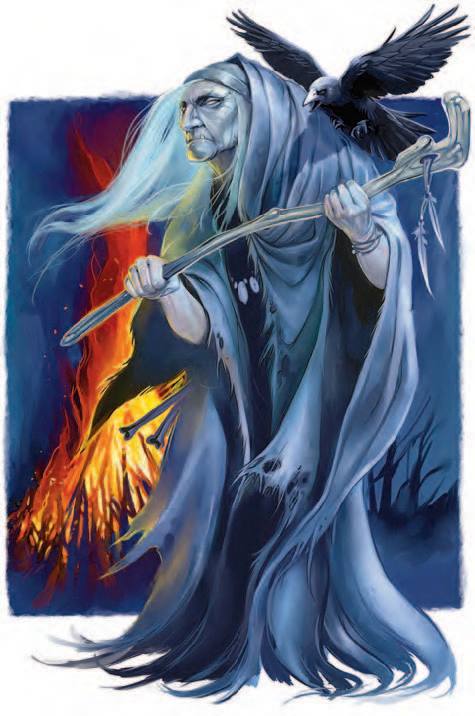
Command: Hide
Also at 10th level, you can order your bird to hide from foes. Designate a source of cover you can see within your bird's range. Your bird flies to that cover and makes a Dexterity (Stealth) check. It remains in cover until you give it another Command or until you move more than 300 ft. from its cover, at which point it begins returning to you. Treat its speed as equal to its range to determine how long it takes to reach you.
- Broadwing. If there is at least 100 ft. of clearance above the ground, your bird can hide above a target without requiring cover.
- Shortwing. You may issue this Command as a reaction if your bird misses on a melee attack.
- Longwing. If your bird attacks a creature that cannot see it, it is treated as having moved at least 60 feet regardless of how far it actually travels.
Command: Ambush
At 14th level, you can issue a special Command on your first turn after rolling initiative. Your bird flies to a target within range and makes a single melee attack. On a hit, your bird deals its normal damage plus an additional 1d6 damage for each ability bonus it possesses.
- Broadwing. The additional dice granted by this feature are d8s.
- Shortwing. After rolling the dice, you may reroll any number of them. You must use the new result, even if it is worse than the old result.
- Longwing. You may use this Command on any turn, provided your bird is hidden from the target.
